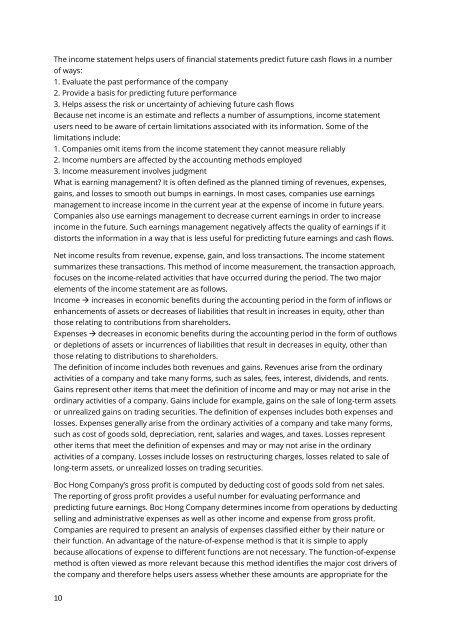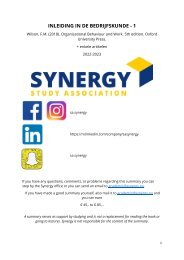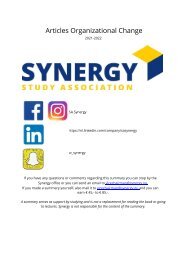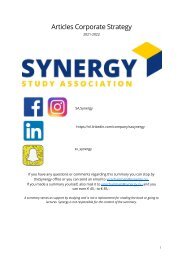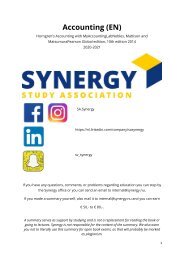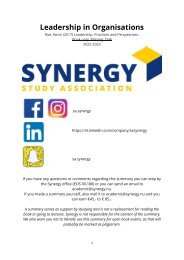Create successful ePaper yourself
Turn your PDF publications into a flip-book with our unique Google optimized e-Paper software.
The income statement helps users of financial statements predict future cash flows in a number<br />
of ways:<br />
1. Evaluate the past performance of the company<br />
2. Provide a basis for predicting future performance<br />
3. Helps assess the risk or uncertainty of achieving future cash flows<br />
Because net income is an estimate <strong>and</strong> reflects a number of assumptions, income statement<br />
users need to be aware of certain limitations associated with its information. Some of the<br />
limitations include:<br />
1. Companies omit items from the income statement they cannot measure reliably<br />
2. Income numbers are affected by the accounting methods employed<br />
3. Income measurement involves judgment<br />
What is earning management? It is often defined as the planned timing of revenues, expenses,<br />
gains, <strong>and</strong> losses to smooth out bumps in earnings. In most cases, companies use earnings<br />
management to increase income in the current year at the expense of income in future years.<br />
Companies also use earnings management to decrease current earnings in order to increase<br />
income in the future. Such earnings management negatively affects the quality of earnings if it<br />
distorts the information in a way that is less useful for predicting future earnings <strong>and</strong> cash flows.<br />
Net income results from revenue, expense, gain, <strong>and</strong> loss transactions. The income statement<br />
summarizes these transactions. This method of income measurement, the transaction approach,<br />
focuses on the income-related activities that have occurred during the period. The two major<br />
elements of the income statement are as follows.<br />
Income → increases in economic benefits during the accounting period in the form of inflows or<br />
enhancements of assets or decreases of liabilities that result in increases in equity, other than<br />
those relating to contributions from shareholders.<br />
Expenses → decreases in economic benefits during the accounting period in the form of outflows<br />
or depletions of assets or incurrences of liabilities that result in decreases in equity, other than<br />
those relating to distributions to shareholders.<br />
The definition of income includes both revenues <strong>and</strong> gains. Revenues arise from the ordinary<br />
activities of a company <strong>and</strong> take many forms, such as sales, fees, interest, dividends, <strong>and</strong> rents.<br />
Gains represent other items that meet the definition of income <strong>and</strong> may or may not arise in the<br />
ordinary activities of a company. Gains include for example, gains on the sale of long-term assets<br />
or unrealized gains on trading securities. The definition of expenses includes both expenses <strong>and</strong><br />
losses. Expenses generally arise from the ordinary activities of a company <strong>and</strong> take many forms,<br />
such as cost of goods sold, depreciation, rent, salaries <strong>and</strong> wages, <strong>and</strong> taxes. Losses represent<br />
other items that meet the definition of expenses <strong>and</strong> may or may not arise in the ordinary<br />
activities of a company. Losses include losses on restructuring charges, losses related to sale of<br />
long-term assets, or unrealized losses on trading securities.<br />
Boc Hong Company’s gross profit is computed by deducting cost of goods sold from net sales.<br />
The reporting of gross profit provides a useful number for evaluating performance <strong>and</strong><br />
predicting future earnings. Boc Hong Company determines income from operations by deducting<br />
selling <strong>and</strong> administrative expenses as well as other income <strong>and</strong> expense from gross profit.<br />
Companies are required to present an analysis of expenses classified either by their nature or<br />
their function. An advantage of the nature-of-expense method is that it is simple to apply<br />
because allocations of expense to different functions are not necessary. The function-of-expense<br />
method is often viewed as more relevant because this method identifies the major cost drivers of<br />
the company <strong>and</strong> therefore helps users assess whether these amounts are appropriate for the<br />
10


